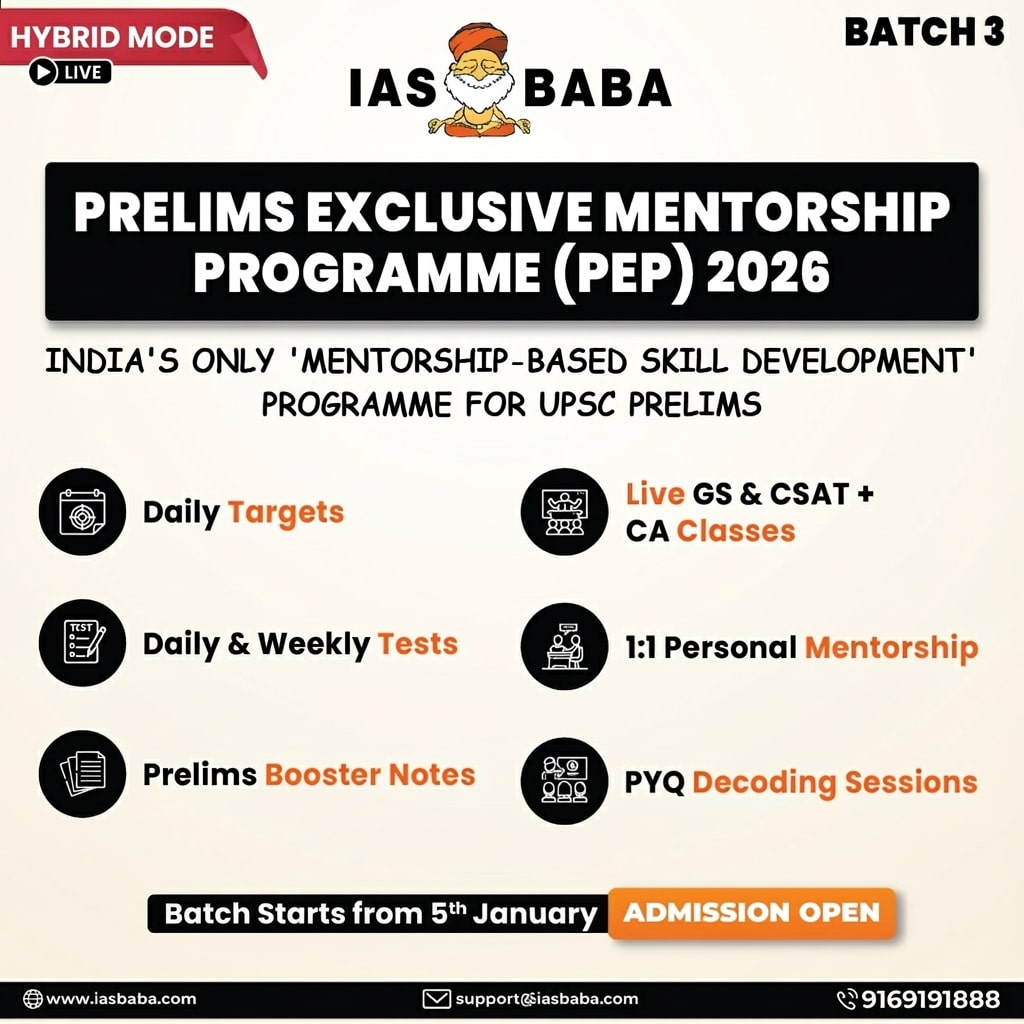Governance, TLP-UPSC Mains Answer Writing
Q. 5. Alternative Dispute Resolution (ADR) mechanisms offer a viable alternative to traditional litigation in India. In light of the Mediation Act, 2023, examine the potential of ADR in strengthening access to justice. Also highlight key challenges in its implementation. (250 words, 15 marks)
Introduction
Alternative Dispute Resolution (ADR) includes mediation, arbitration, conciliation, negotiation, and Lok Adalats. With rising pendency, the Mediation Act, 2023 strengthens court-annexed ADR to ensure faster, inclusive, and less adversarial justice.
Body
Major Types of ADR in India
Mediation: A neutral mediator facilitates voluntary settlement between parties.
Arbitration: A binding decision by an arbitrator substitutes formal court judgment.
Conciliation: A conciliator proposes solutions, which parties may voluntarily adopt.
Negotiation: Parties engage directly to find a mutually agreeable resolution.
Key Provisions of the Mediation Act, 2023
Mandates pre-litigation mediation for civil and commercial disputes.
Establishes the Mediation Council of India to regulate the profession.
Provides enforceability of mediated settlements as if they were court decrees.
Transformative Potential of ADR
- Statutory Backing via the Mediation Act: The Act enforces pre-litigation mediation, sets up a Mediation Council, and introduces a 180-day resolution limit. Example: Court-annexed community mediation gains legal credibility and structure.
- Eases Judicial Burden: ADR diverts routine and compoundable cases from courts, reducing pendency. Example: Over 1.27 crore cases were settled by Lok Adalats in 2023.
- Improves Access to Justice: Cost-effective, informal, and less intimidating than courts, ADR empowers vulnerable groups. Example: Gram Nyayalayas use trained mediators to resolve local disputes.
- Fosters Consensus and Reconciliation: Unlike adversarial litigation, ADR promotes healing and constructive dialogue. Example: Family court mediations help resolve child custody and divorce disputes.
- Maintains Judicial Oversight: Courts retain supervisory powers under Section 89 CPC, ensuring ADR aligns with legal standards. Example: High Court mediation centres function under judicial scrutiny.
Challenges in ADR Implementation
- Lack of Legal Literacy and Awareness: A large section of the population remains unaware of ADR mechanisms or doubts their legitimacy. Example: Participation in mediation remains low in rural and semi-urban areas.
- Inadequate Institutional Framework: The absence of a robust, uniform ADR infrastructure across states hampers effectiveness. Example: Many district courts lack functional mediation centres.
- Poor Quality Control and Accreditation: Unregulated mediator training leads to inconsistent outcomes and diminished public trust. Example: Mediator certification and capacity vary significantly between states.
- Delayed Enforcement of Settlements (pre-Mediation Act): Before 2023, ADR lacked a clear statutory mechanism for direct enforceability. Example: Mediated agreements often required judicial approval for execution.
- Restricted Scope of Applicability: Certain high-stakes, criminal, or constitutional issues remain outside the ambit of ADR. Example: Matters involving sexual offences or constitutional validity are excluded.
Recommendations
- Strengthen Institutional Capacity: Following the Sri Krishna Committee’s call for efficiency in arbitration, training programs and a national ADR grid must be implemented.
- Expand Digital Infrastructure for ODR: NITI Aayog’s push for Online Dispute Resolution should translate into tech-enabled platforms for rural and small-value disputes. Example: AI-assisted ODR portals can speed up resolution of contractual conflicts.
- Ensure Global Alignment: India should ratify the Singapore Convention on Mediation to boost cross-border enforceability and build on the Arbitration and Conciliation Act, 1996.
Conclusion
The Mediation Act anchors ADR in law, promoting a participatory and less adversarial justice model. Its success depends on awareness, digital tools, and global alignment to complement, not compete with, the courts.














